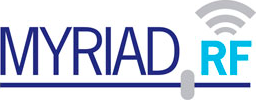Hey everyone, I’m new to the world of SDR’s and it’s been kind of a lot to take in. I have a research project I’m working on involving RF sensing, and so I settled on the Lime Mini 2.0 as the best device to use. I chose the Lime because of the form factor and the technical specs (full duplex, wide Tx / Rx ability etc…) but I didn’t do enough research on support side as far as how to get it running. I made a rookie mistake and assumed that because I could buy it, their would be easy quick-start software package or guides. I’ve realized that the resources on this device are a bit disparate, and after spending a lot of time reading about how to get started it seems like a lot of things are out of date / finicky to get working.
So this is my ask:
To the people who have used the Lime Mini 2.0 for a long time, what do you recommend as the best path for an SDR beginner to take, starting from when they take it out of the box?
Here’s some specifics about my project that could be useful:
-
I’m running Windows 11, or Mac OS. Could install a Linux distro if that’s the recommended system.
-
I’m basically planning to turn it into a short range directed radar device (transmit a chirp, then recieve & process it)
Some specific recommendations that would be really helpful would be:
- What software packages you think would be most appropriate for this?
- Recomendations on Rx / Tx antenna’s
- Pitfalls to watch out for / things an SDR beginner should know.
